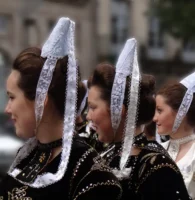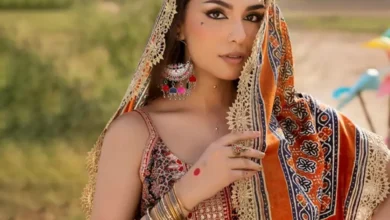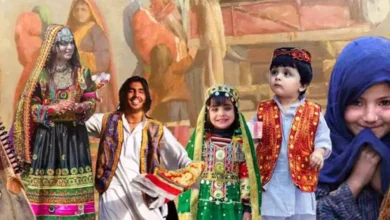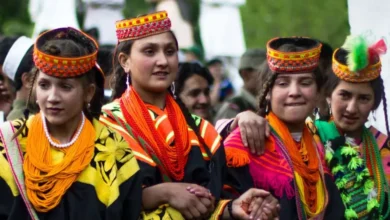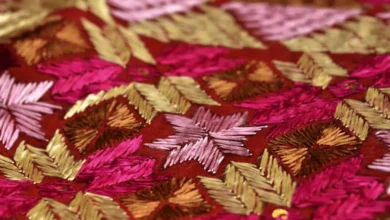Meta Description:
Discover the Kashmiri Pheran — the iconic, flowing robe of Kashmir, woven with warmth, poetry, and centuries of Himalayan heritage. Explore its history, styles, symbolism, and modern revival.
More Than a Garment — A Hug from the Himalayas
In the snow-laced valleys of Kashmir, where saffron blooms and shikaras glide over Dal Lake, there’s a garment that doesn’t just clothe the body — it embraces the soul.
Meet the Pheran — a long, loose robe, elegantly draped, deeply practical, and culturally sacred. Worn by men and women, young and old, Hindu and Muslim alike — it is Kashmir’s great unifier.
Born from biting winters and poetic hearts, the Pheran is not fashion.
See also Pashtun Attire: Pakol Caps, Shalwar Kameez, and Cultural Identity
Pashtun Attire: Pakol Caps, Shalwar Kameez, and Cultural IdentityIt’s heritage stitched in wool.
It’s resilience wrapped in warmth.
It’s Kashmir — walking.
Let’s unfold its layers.
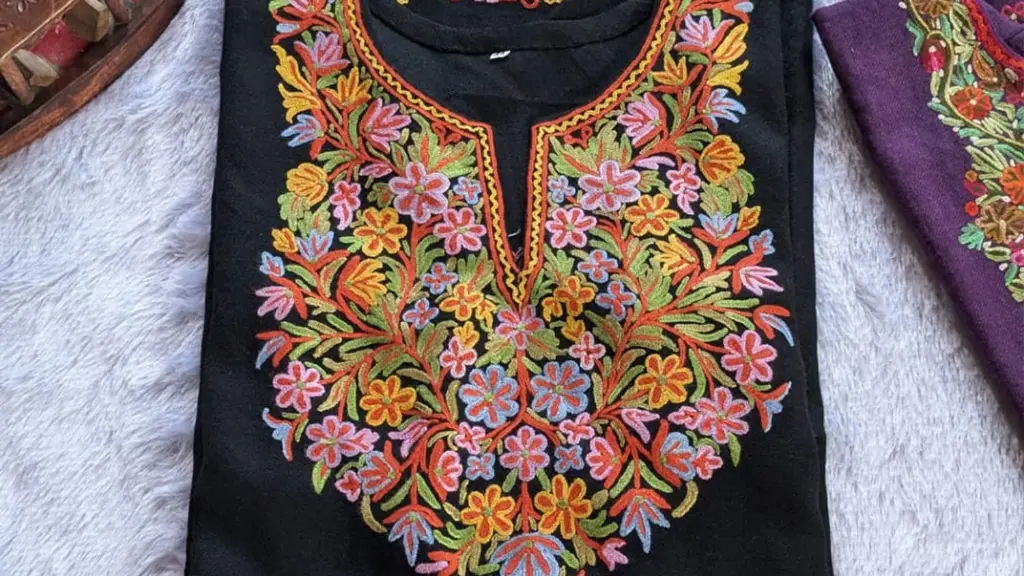
🧥 What Is a Pheran? The Anatomy of Elegance
The Pheran (also spelled Phiran) is a traditional long, loose gown worn in the Kashmir Valley — extending from shoulders to below the knees (or even ankles), with wide sleeves and often a deep front pocket called the “kangri pouch.”
✨ Key Features:
- Length: Knee-length to ankle-length (women’s often longer)
- Sleeves: Wide, flowing — perfect for tucking hands into warmth
- Neckline: Usually round or V-shaped, sometimes with delicate embroidery
- Fabric:
→ Winter: Wool (Pashmina, Raffal, or Tweed)
→ Summer: Cotton or silk - Closure: Traditionally none — simply slipped over the head and draped
- Embellishment: Embroidery (Sozni, Tilla, Aari), printed motifs, or left plain for daily wear
🌨️ Local Saying: “When winter knocks, the Pheran answers — with open arms.”
See alsoBrittany’s Traditional Coiffes: The Lace Headdresses of Breton Women
📜 A Legacy Woven in Snow: 700 Years of History
The Pheran’s origins trace back to the 14th–15th century, introduced during the rule of Sultan Zain-ul-Abidin — who, legend says, brought skilled Central Asian artisans to Kashmir.
Historically, it evolved as a practical response to Kashmir’s harsh winters — but soon became a canvas for art, identity, and social expression.
- Mughal Era: Royals wore Pherans in silk and gold thread (Tilla work)
- Dogra Rule: Styles diversified — Hindu Pherans often had side slits; Muslim styles remained closed-front
- Modern Era: Worn across communities — a rare symbol of shared Kashmiri identity
🕊️ Cultural Note: In times of conflict, the Pheran has also been a symbol of silent resistance — its folds hiding warmth, yes, but also dignity, endurance, and unity.
👗 Styles & Variations: One Garment, Many Identities
While the Pheran’s silhouette remains consistent, its details speak volumes — revealing gender, region, religion, and occasion.
👘 Women’s Pheran
- Length: Ankle-length, often worn over Salwar (loose pants)
- Embellishment: Heavily embroidered — especially on chest, cuffs, and hem
- Fabrics: Wool for winter, cotton/silk for summer
- Colors: Reds, maroons, greens, golds — vibrant for festivals; pastels for daily wear
- Accessories: Paired with Taranga (traditional headdress) for brides or special occasions
👔 Men’s Pheran
- Length: Knee-length or slightly below
- Embellishment: Minimal — often plain wool or subtle embroidery on collar and cuffs
- Fabrics: Thick wool (Raffal) for winter; cotton for summer
- Colors: Earth tones — browns, greys, blacks, deep blues
- Worn With: Pyjama (loose pants) and sometimes a skullcap (Karakul or Taranga for elders)
⛳ Regional Variations
- Srinagar Style: More tailored, often with side slits (Hindu influence)
- Anantnag/Baramulla: Looser, fuller — designed for extreme cold
- Gurez & Kargil: Heavier wool, sometimes lined with sheepskin
🧵 The Art on the Pheran: Embroidery That Tells Tales
What elevates the Pheran from robe to masterpiece? Its embroidery — delicate, detailed, and deeply symbolic.
✨ Major Embroidery Styles:
1. Sozni (or Suzani) Embroidery
- Technique: Fine needlework on Pashmina or wool — often floral or paisley motifs
- Thread: Silk or cotton, in subtle tones
- Used For: Bridal Pherans, heirloom pieces
2. Tilla Embroidery
- Technique: Gold or silver metallic thread (zari) stitched in intricate patterns
- Occasion: Weddings, Eid, festivals
- Symbolism: Royalty, celebration, divine light
3. Aari Embroidery
- Technique: Chain stitch using a hooked needle — faster, bolder than Sozni
- Motifs: Chinar leaves, almonds (badam), blossoms, birds
🍁 Symbol Alert: The Chinar leaf — Kashmir’s iconic maple — is the most beloved motif, symbolizing resilience, beauty, and the changing seasons of life.
❄️ The Kangri & the Pheran: A Winter Love Story
No discussion of the Pheran is complete without its faithful companion — the Kangri.
What Is a Kangri?
A portable earthenware heater — filled with hot embers, carried under the Pheran for warmth.
Why It Matters:
- The Pheran’s deep front pouch is designed to hold the Kangri snugly against the body
- Together, they form Kashmir’s ultimate winter survival kit — elegant, efficient, and eco-friendly
- Symbolically, the Kangri represents home, hearth, and the quiet endurance of Kashmiri life
🌿 Poetic Truth: “The Pheran hides the Kangri — just as Kashmir hides its fire beneath silence.”
🔄 Modern Revival: From Dal Lake to Global Runways
Once seen as “old-fashioned” by urban youth, the Pheran is now enjoying a powerful renaissance — embraced by designers, celebrities, and a new generation proud of their roots.
👗 Fashion Fusion
- Designers like Rohit Bal, JJ Valaya, and Kashmir-based labels (e.g., Paper Mache, Dastkar Kashmir) are reimagining Pherans in silk, organza, and velvet — for global runways
- Bollywood & OTT: Seen in films like Haider, The Kashmir Files, and web series — styled with jeans, boots, or sneakers
- Celebrities: Alia Bhatt, Sonam Kapoor, and local icons like Sanam Baloch have worn Pherans on magazine covers and red carpets
🛍️ Everyday Wear
- Printed Pheran kurtas for office wear
- Cropped Pheran jackets paired with dresses
- Pheran-inspired coats in wool and tweed for global winters
🏛️ Cultural Pride
- #MyPheranMyPride trending on Instagram during winter
- Universities and cultural groups hosting “Pheran Day”
- Government promoting “Handloom Pheran” as sustainable winter wear
💬 “We’re not freezing in fashion. We’re glowing in heritage.” — Young Kashmiri designer, Srinagar
🌱 Challenges: Can Tradition Survive Fast Fashion?
Despite its revival, the authentic Pheran faces threats:
- ⚠️ Mass-produced imitations — synthetic fabrics, machine prints, cheap labor
- ⚠️ Decline of handloom weavers — due to conflict, migration, and lack of support
- ⚠️ Loss of embroidery artisans — Sozni and Tilla masters aging without apprentices
✅ How You Can Help
- Buy handloom Pherans from Kashmiri cooperatives (not mass retailers)
- Support fair-trade brands like Kashmir Loom, Paper Mache, Dastkar Kashmir
- Visit Srinagar’s Lal Chowk or Budshah Nagar — meet the makers, feel the wool
- Share the story — online, in classrooms, at cultural events
🖌️ “Don’t just wear a Pheran. Know its loom. Honor its hands. Warm its future.”
Quick Reference: Pheran at a Glance
| Origin | Kashmir Valley (14th–15th century) |
| Meaning | Warmth, identity, cultural unity |
| Base Fabric | Wool (winter), Cotton/Silk (summer) |
| Key Embroidery | Sozni, Tilla, Aari — with Chinar, almond, floral motifs |
| Signature Accessory | Kangri (portable heater) |
| Worn By | Men, women, all communities — unifier of Kashmir |
| Modern Use | Bridal wear, fashion, daily winter wear, cultural symbol |
FAQs: The Kashmiri Pheran
❓ Can non-Kashmiris wear a Pheran?
Absolutely — it’s a garment of warmth and welcome. Just wear it respectfully, and ideally, buy from Kashmiri artisans.
❓ What’s the difference between a Pheran and a robe or kaftan?
The Pheran is specific to Kashmir — with unique cut, kangri pouch, regional embroidery, and cultural symbolism. Kaftans are Middle Eastern; robes are generic.
❓ How do I style a Pheran for modern wear?
→ Pair with jeans and boots for street style
→ Belt it at the waist for a dressy look
→ Layer over a turtleneck in extreme cold
→ Accessorize with silver jewelry or a Pashmina shawl
❓ Why is the Chinar leaf so common in Pheran embroidery?
The Chinar is Kashmir’s national tree — symbolizing resilience (it survives harsh winters), beauty (its autumn colors), and rootedness. It’s Kashmir’s soul in leaf form.
Conclusion: Wrapped in Warmth, Woven in Wisdom
The Pheran is not clothing.
It’s a poem written in wool.
It’s a hearth you wear.
It’s Kashmir’s quiet defiance — elegant, enduring, unbroken.
In its folds, you find:
→ The crunch of winter snow
→ The scent of saffron tea
→ The whisper of shikaras on still water
→ The resilience of a people who choose beauty — even in hardship
So next time you wrap yourself in a Pheran — feel its weight.
Not of fabric.
But of mountains.
Of poetry.
Of generations who stitched warmth into the coldest days.
That’s not fashion.
That’s home.
And it’s still being woven —
one thread,
one stitch,
one winter at a time.
❄️🧵🏔️

